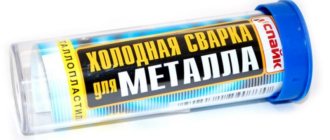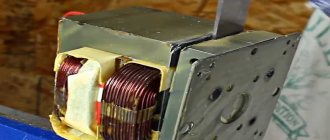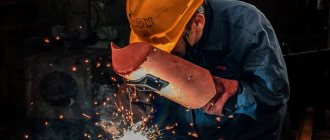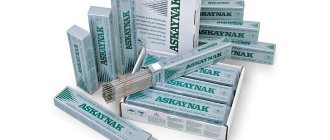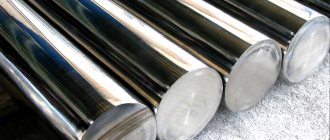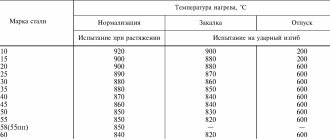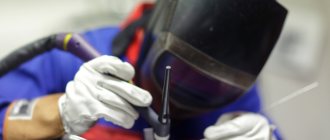Until recently, many people did not know about the existence of cold welding. This substance is an excellent alternative to conventional classical welding. In fact, this is nothing more than glue, but unlike ordinary glue, the strength of the connection created using cold welding is much higher. On the modern building materials market there are quite a large number of different modifications of cold welding from different brands. This article will discuss American-made cold welding, which is called Hi-Gear.
The glue from this manufacturer is quite popular in our country. Its popularity is due to the high quality of the substance and the presence in the line of modifications aimed at gluing certain materials. The universal version of Hi-Gear cold welding is fully suitable for joining almost all materials, both homogeneous and dissimilar. The great thing about cold welding is that it can be used to seal holes . In this case, the substance is used according to the principle of ordinary stationery plasticine. Most often, this glue is used to join metal parts, which cannot be done using classical welding due to the low melting point of the metal or its small thickness.
In order to use cold welding, it is not necessary to have any additional knowledge or tools. It is enough just to strictly follow the instructions for use. The strength of the connection created using this method can compete with even classical welding. If you use glue to seal holes, the strength will not be as great. However, this repair work can only be carried out using cold welding, because there is simply no alternative to it. The connections can easily withstand strong vibrations and temperatures, the value of which can reach 150 degrees Celsius.
Specifications
NameValueUnit of measurement
| Color | dark grey | |
| Density | 1.9 | g/cm³ |
| Compressive strength | 3217 | kg/cm² |
| Elastic modulus | 2.7x4.54 | kg/cm² |
| Shear strength | 143 | kg/cm² |
| Hardness | 85 according to Rockwell | |
| Tensile strength | 1072 | kg/cm² |
| Maximum operating temperature | 260 | °C |
| Volume resistance | 5x10 | Ohm/cm |
| Dielectric strength | 400 | Volts/mil/0.12 m |
Porridge from an ax - magazine Behind the wheel
Archived article
TECHNICAL ASSISTANCE
materials
COLD WELDINGS
PORRIDGE FROM AN AX
VYACHESLAV LUKYANOV
Quiksteel - fast steel, metal-plasticine, metal-polymer composition, cold welding, metal putty - all these names refer to a large group of repair compounds based on epoxy, amine or other compositions with metal fillers. The purpose of the latter is to minimize the possibility of electrochemical reactions in the contact of dissimilar materials. Of course, as soon as they appeared on the market, these compounds gave rise to legends about their unique capabilities. Well, let's try to check it ourselves.
Let's start with the properties that catch the eye. As a rule, the consistency of the compositions is thick: apply to any surface, even the ceiling of a car, and they won’t drip! After hardening, the “patch” can be processed with metal tools and painted.
AT THE COUNTER
A lot of! We have acquired 18 types of drugs (see table). Purchases were divided into two groups: single-volume and double-volume.
In the first, the components are already in contact with each other, and for the reaction to take place, they must be thoroughly mixed. In two-volume cold welding, the components are packaged separately. When mixing, they must be dosed accurately (photos 1–3).
A special group of drugs (photos 4, 5) designed for high temperatures stands out. In them, the working composition is diluted with diluents. After application, the preparations are kept for several hours until drying and only after that, with slow heating to operating temperature, final polymerization occurs.
A common limitation for the application of cold welds is temperature. It’s not like in the cold - below plus 10°C they practically do not freeze.
To check the performance and compliance with the characteristics given in the instructions, we applied various compositions to the steel strip at a room temperature of about 15°C. What happened as a result?
WARM-UP
Single-volume ones are easy to use: having cut off the required piece from the rod with a knife, to “start” the polymerization reaction, knead it until a homogeneous mass is obtained. Ready-made compositions with bronze and copper fillers are brown in color, and with other fillers they are gray in various shades. The least effort is required for preparations that need to be kneaded with wet hands. (Some manufacturers recommend wearing protective gloves. The “clean hands” formula in Don Dial formulations is most likely an indication of their non-toxicity, and not a requirement for clean hands!)
The most difficult ones to mix are those made by Qualco (two plates) and Permatex.
Cold welding Hi Gear and Don Dial, judging by the barcodes on the packages, are produced by the same company, their characteristics are very similar. According to the instructions, they can be applied to damp and oily surfaces, which is what we did. In order for the compounds to stick, they had to be thoroughly rubbed into the surface of the plate. When the oil and water films were mixed with the preparations, the compositions stuck quite firmly (photo 6).
The rest of the products we purchased work only on cleaned and degreased surfaces.
Polymerization times vary widely. Hi Gear (Don Dial) works quickly. Within an hour - complete polymerization, and the “patch” is hard and can be processed well.
Kerry and Remteka were completely cured after 24 hours. But that's what the instructions say. But for Stanley, Abro, Qualco, Polymet, a day was not enough: soft. True, heating to 50°C for 5 minutes allowed Stanly and Abro to achieve the desired conditions, but Qualco and Polymet remained soft, disappointing us.
MATCH
“Polyrem” in two small packages (20 g each) is very difficult to mix (the compositions are hard), I had to preheat them. In a large package (80 g), the chemicals are accompanied by spatulas, plastic gloves, a piece of sandpaper, bottles of solvent and rust remover. The compositions are softer, but the mixture did not completely harden even after additional heating.
“Automig” disappointed me right away: it had already dried out in the plastic tube! Therefore, it was not possible to verify its merits.
“Desan” is a mixture of two thick compounds, hardened after 24 hours in accordance with the instructions. The color of the composition is dark brown.
“+Titan” is a light gray composition, also hardened after 24 hours.
STEELWORKERS
We took up high-temperature formulations and started with a massive, 200-gram can of Polyterm. But what to do with it if it is so thick that you can’t even pick it out of the jar! The instructions recommend diluting with water, but this requires a lot of time and patience. We didn’t bother and we don’t recommend it to others.
Thermal steels CarGo and Don Dial in polyethylene jars after thorough mixing acquired a creamy consistency. CarGo has a dark gray color interspersed with metallic filler, while Don Dial has a brownish, monochromatic color. The instructions for these drugs indicate that they can block holes with a diameter of up to 6 mm, however, due to the liquid consistency, problems arose already with a diameter of about 3 mm.
After applying a layer of the recommended thickness (up to 6 mm) to the cleaned plate, we left it for about 20 hours (the instructions say 3-4 hours). The compounds seemed to have dried - at least they were not pressed through with a fingernail. But when they began to gradually warm up the plate with a heat gun (Tmax about 700°C), the CarGo composition began to swell - so it didn’t dry out?! How long does it take to dry it? Gradually they began to reduce the thickness of the applied layer to 1 mm.
Heated - it will still swell! I wonder how this thing will behave on hot engine parts? The CarGo, already heated to 700°C, was so burnt out that its loose remains could easily be picked apart by fingers. The instructions assure that its operating temperature is 1316°C! Is this fantastic... Or fake? (photo 7)
Don Dial showed the best result, but problems with sealing large holes and drying remained (photo 8).
The two-component Aluminum repair compound from Permatex is designed for sealing potholes, sinkholes, and cracks in aluminum parts operating at temperatures up to 427°C. The components from two plastic bags are mixed and applied to the damaged area. After 24 hours, the temperature of the part can be raised to operating temperature within 10-15 minutes.
The one-component Metal repair compound from Permatex is intended for similar repairs of parts made of various materials operating at temperatures up to 1093°C. The composition is squeezed out of the plastic packaging onto the damaged area. After drying for 24 hours, you can raise the temperature of the part to operating temperature within 10–15 minutes.
The characteristics of these compositions are fully consistent with the instructions.
After complete (when it was possible) polymerization, we tested the mechanical properties of the finished “patches” with a file. Some are not bad, but others are clearly not worth the money spent - the strength is low.
Imported single-volume “cold welds”.
Domestic single-volume “cold welding”.
Two-volume compositions.
Thermal steels.
High temperature compounds for steel and aluminum.
Samples of “cold welds” with bronze and steel fillers. They were cut with a file.
CarGo thermal steel after 20 hours of drying and heating with a heat gun (temperature about 700°C) swells and crumbles with little effort.
On the left is a sample of CarGo thermal steel, on the right is Don Dial after heating with a heat gun. CarGo swells even with a thin layer. Don Dial cracked at about 3mm layer thickness. Due to its liquid consistency, it flows well into cracks, but does not cover holes well (in the photo there is a hole with a diameter of 3 mm).
SUMMARY
1. Do not confuse the popular name “cold welding” with real welding: the strength of the connection is many times higher, although the former, of course, is more technologically advanced.
2. For quick repairs in the field, the most suitable one-volume preparations are Hi Gear, Don Dial, which harden in just one hour, are suitable for wet and oily surfaces, and do not require protective gloves.
3. The use of two-volume preparations is somewhat difficult, especially when it is necessary to mix unequal volumes of hardener and compound. If you make a mistake in the proportions, the end result will be bad.
4. Domestic “cold welding” is unreliable. Either they harden in the package, or they don’t harden when needed.
5. The use of high-temperature compounds requires increased attention when performing operations.
Error in the text? Select it with your mouse! And press: Ctrl + Enter
www.zr.ru
Operating principle
Cold welding Hi Gear has a consistency similar to plasticine, which can easily be used to cover cracks, holes, damage on the surface of various materials, and eliminate leaks. In addition, this product:
- has excellent adhesion to any materials;
- tolerates heating up to 260 degrees Celsius;
- withstands the effects of auto chemicals;
- easy to knead and apply;
- hardens quickly.
The hardened composition can be processed by any mechanical means - on a machine or with a file, sanding, drilling, painting, carving, and so on.
How to use?
Before you start joining materials or sealing a hole, you need to prepare the surface for gluing. To do this, using a solvent, you need to clean the surface of both parts from grease, traces of oil, etc. (if these are holes, its edges are cleaned). It is worth noting that if the material being glued is metal, then it should not have traces of corrosion (rust). If the surface is smooth, it needs to be made rough; for this you can use sandpaper, which is available in every home.
After completing all the preparatory work, you need to cut off the required amount of material from the packaging. The two components should turn into a homogeneous mass. After this happens, the plasticity of the material will increase, after which you need to wait five to six minutes and the glue can be used.
It is important to know: in order for the declared properties of a substance to manifest itself in practice, both components must be used in a strict one-to-one ratio.
If you are gluing two parts together, after applying the substance you need to apply pressure to them for a few minutes, ideally using a press. When repairing a crack or chip, cold welding should completely fill the empty space. The initial drying time can vary from 20 minutes to 1 hour (depending on air temperature and relative humidity). Complete drying occurs after twenty-four hours. After which the product can be used in standard mode. In order for the strength of the joint to remain at a high level and its service life to be long, it is imperative to withstand the full drying period.
When using cold welding, you must use rubber gloves, as the substance can cause severe allergic reactions upon contact with skin. Even if the slightest particle of a substance gets onto an open area of skin, the affected area should be washed with plenty of running water. After which, in order to avoid negative effects on health, you need to consult a doctor as soon as possible, who will need to show the glue packaging.
Instructions for use
Hi-Gear cold welding is easy and simple to use. Anyone can follow the instructions. Here's what to do:
- Prepare the surface to be treated at the joints - clean from dirt, degrease, and sand with sandpaper.
- Cut a piece of putty of the required size, knead it until it becomes a sticky plastic homogeneous mass with wet hands.
- Apply the product to the desired surface, if necessary, level it with a flat object moistened with water, and give the desired shape.
- Press the putty onto the surface for five to ten minutes, if possible.
Where is cold welding used?
Very often this substance is used both for urgent and routine car repairs. Various defects (cracks, chips, etc.) may appear in small parts inside the machine. This substance allows you to repair them without the need for dismantling. The short initial drying time allows cold welding to be used for car repairs while on the road.
Cold welding glue can be used at home without any problems. It can firmly connect plastic, glass, wood, ceramic, metal, etc. Moreover, you can easily use it to connect, for example, glass with wood or metal with ceramics. The versatility of the substance allows it to be used with almost any materials. Very often, pipes are repaired using cold welding. Separately, it is worth noting the ability of glue to restore threads on bolts, screws, nuts, etc.
Advantages and disadvantages
The main advantage of glue is considered to be convenient transportation. The small case does not take up much space. Hi Gear brand cold welding has many other advantages:
- The consistency of the mass resembles plasticine, it is easily kneaded with fingers, fills cracks, holes, chips;
- Hi-Gear is not afraid of moisture and adheres well to pipes where leaks need to be repaired;
- has high adhesion, is universal, compatible with any materials;
- Hi-Gear can withstand heat, shock, pressure;
- chemically neutral, does not react with fuels and lubricants, auto chemicals, aggressive detergents, paintwork materials;
- the glue hardens quickly, after an hour you can begin refining and leveling the gluing area;
- the manufacturer offers “Hi Gear” universal adhesive and several special formulations with various fillers.
But not everything is so rosy; users note a number of disadvantages:
- high price compared to other analogues;
- low shear strength;
- mandatory compliance with storage conditions.
Features and scope
The mass, whose texture resembles plasticine, is used to connect even metal parts that cannot be welded. “Fast steel” of the Hi-Gear brand is used in the repair of communications connected to the water supply and heating pipe system. Moisture does not affect the quality of the formed layer. The gluing area is not destroyed by vibration and can withstand heating up to 260°C. Threads are cut along the glued layer for fastening hardware. In polymerized form, the mixture is similar to metal and can be ground and polished. From the point of view of Hi-Gear chemists, a multifunctional adhesive is a putty with a metal filler. Hi-Gear is designed for restoring cast iron parts and products made of non-ferrous metals; it perfectly glues almost all materials and forms dissimilar joints. The scope of application of American-made cold welding is not limited; Hi-Gear is used on the road to repair a car, at home - to repair plumbing of household items; in a suburban area, the glue will become a reliable assistant in a critical situation.
Hi-Gear universal cold welding bonds a variety of materials
Description, composition and purpose of the product
Hi Gear fast steel is a modern superpolymer, a universal and multifunctional product. It is a super putty reinforced with steel.
Intended for gluing various materials, for assembling and repairing products made of wood, ceramics and porcelain, glass and plexiglass, plastic, steel and cast iron, non-ferrous metals. Due to the fact that it can be used even in constant contact with water, it is suitable for repairing plumbing, heating and sewer pipes.

